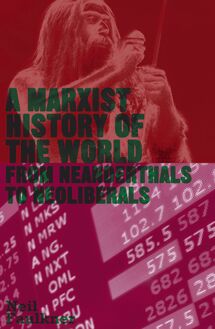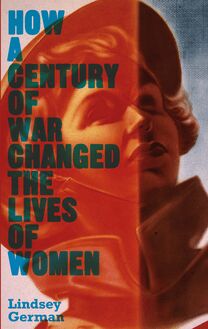-
 Univers
Univers
-
 Ebooks
Ebooks
-
 Livres audio
Livres audio
-
 Presse
Presse
-
 Podcasts
Podcasts
-
 BD
BD
-
 Documents
Documents
-
- Cours
- Révisions
- Ressources pédagogiques
- Sciences de l’éducation
- Manuels scolaires
- Langues
- Travaux de classe
- Annales de BEP
- Etudes supérieures
- Maternelle et primaire
- Fiches de lecture
- Orientation scolaire
- Méthodologie
- Corrigés de devoir
- Annales d’examens et concours
- Annales du bac
- Annales du brevet
- Rapports de stage
La lecture à portée de main
Vous pourrez modifier la taille du texte de cet ouvrage
Découvre YouScribe en t'inscrivant gratuitement
Je m'inscrisDécouvre YouScribe en t'inscrivant gratuitement
Je m'inscrisEn savoir plus
Vous pourrez modifier la taille du texte de cet ouvrage
En savoir plus

Description
Reading history against the grain, Neil Faulkner reveals that what happened in the past was not predetermined. Choices were frequent and numerous. Different outcomes - liberation or barbarism - were often possible. Rejecting the top-down approach of conventional history, Faulkner contends that it is the mass action of ordinary people that drives great events.
At the beginning of the 21st century - with economic disaster, war, climate catastrophe and deep class divisions - humans face perhaps the greatest crisis in the long history of our species. The lesson of A Marxist History of the World is that, if we created our past, we can also create a better future.
Introduction: Why History Matters
1. Hunters and Farmers c. 2.5 million-3000 BC
The Hominid Revolution
The Hunting Revolution
The Agricultural Revolution
The Origins of War and Religion
The Rise of the Specialists
2. The First Class Societies c. 3000-1000 BC
The First Ruling Class
The Spread of Civilisation
Crisis in the Bronze Age
How History Works
Men of Iron
3. Ancient Empires c. 1000-30 BC
Persia: the Achaemenid Empire
India: the Mauryan Empire
China: the Qin Empire
The Greek Democratic Revolution
The Macedonian Empire
Roman Military Imperialism
The Roman Revolution
4. The End of Antiquity
c. 30 BC-AD 650
The Crisis of Late Antiquity
Huns, Goths, Germans, and Romans
Mother-Goddesses and Power-Deities
Judaism, Christianity, and Islam
Arabs, Persians, and Byzantines
5. The Medieval World
c. AD 650-1500
The Abbasid Revolution
Hindus, Buddhists, and the Gupta Empire
Chinese History’s Revolving Door
Africa: Cattle-Herders, Ironmasters, and Trading States
New World Empires: Maya, Aztec, and Inca
6. European Feudalism
c. AD 650-1500
The Cycles and Arrows of Time
The Peculiarity of Europe
The Rise of Western Feudalism
Crusade and Jihad
Lord, Burgher, and Peasant in Medieval Europe
The Class Struggle in Medieval Europe
The New Monarchies
The New Colonialism
7. The First Wave of Bourgeois Revolutions
1517-1775
The Reformation
The Counter-Reformation
The Dutch Revolution
The Thirty Years War
The Causes of the English Revolution
Revolution and Civil War
The Army, the Levellers, and the Commonwealth
Colonies, Slavery, and Racism
Wars of Empire
8. The Second Wave of Bourgeois Revolutions
1775-1815
The Enlightenment
The American Revolution
The Storming of the Bastille
The Jacobin Dictatorship
From Thermidor to Napoleon
9. The Rise of Industrial Capitalism
c. 1750-1850
The Industrial Revolution
The Chartists and the Origins of the Labour Movement
The 1848 Revolutions
What is Marxism?
What is Capitalism
The Making of the Working Class
10. The Age of Blood and Iron
1848-1896
The Indian Mutiny
The Italian Risorgimento
The American Civil War
Japan’s Meiji Restoration
The Unification of Germany
The Paris Commune
The Long Depression
11. Imperialism and War
1873-1918
The Scramble for Africa
The Rape of China
What is Imperialism?
The 1905 Revolution: Russia’s Great Dress Rehearsal
The Ottoman Empire and the 1908 ‘Young Turk’ Revolution
1914: Descent into Barbarism
Reform or Revolution?
The First World War
12. The Revolutionary Wave
1917-1928
1917: The February Revolution
Dual Power: The Mechanics of Revolution
February to October: The Rhythms of Revolution
1917: The October Insurrection
1918: How the War Ended
The German Revolution
Italy’s ‘Two Red Years’
World Revolution
The First Chinese Revolution
Revolts Against Colonialism
Stalinism: The Bitter Fruit of Revolutionary Defeat
13. The Great Depression and the Rise of Fascism
1929-1939
The Roaring Twenties
The Hungry Thirties
1933: The Nazi Seizure of Power
State Capitalism in Russia
1936: The French General Strike and Factory Occupations
The Spanish Civil War
The Causes of the Second World War
14. World War and Cold War
1939-1967
The Second World War: Imperialism
The Second World War: Barbarism
The Second World War: Resistance
The Cold War
The Great Boom
Maoist China
End of Empire?
Oil, Zionism, and Western Imperialism
1956: Hungary and Suez
Che Guevara and the Cuban Revolution
15. The New World Disorder
1968-present
The Vietnam War
1968
1968-75: The Workers’ Revolt
The Long Recession, 1973-92
What is Neoliberalism?
1989: The Fall of Stalinism
9/11, the War on Terror, and the New Imperialism
The 2008 Crash: From Bubble to Black Hole
The Second Great Depression
Conclusion: Making the Future
Sujets
Informations
| Publié par | Pluto Press |
| Date de parution | 05 avril 2013 |
| Nombre de lectures | 0 |
| EAN13 | 9781849648646 |
| Langue | English |
| Poids de l'ouvrage | 3 Mo |
Informations légales : prix de location à la page 0,0748€. Cette information est donnée uniquement à titre indicatif conformément à la législation en vigueur.
Extrait
A Marxist History of the World
Counterfire
Series Editor: Neil Faulkner
Counterfire is a socialist organisation which campaigns against capitalism, war, and injustice. It organises nationally, locally, and through its website and print publications, operating as part of broader mass movements, for a society based on democracy, equality, and human need.
Counterfire stands in the revolutionary Marxist tradition, believing that radical change can come only through the mass action of ordinary people. To find out more, visit www.counterfire.org
This series aims to present radical perspectives on history, society, and current affairs to a general audience of trade unionists, students, and other activists. The best measure of its success will be the degree to which it inspires readers to be active in the struggle to change the world.
Also available:
How a Century of War Changed the Lives of Women
Lindsey German
Forthcoming:
The Second World War:
A Marxist History
Chris Bambery
First published 2013 by Pluto Press 345 Archway Road, London N6 5AA
www.plutobooks.com
Distributed in the United States of America exclusively by Palgrave Macmillan, a division of St. Martin’s Press LLC, 175 Fifth Avenue, New York, NY 10010
Copyright © Neil Faulkner 2013
The right of Neil Faulkner to be identified as the author of this work has been asserted by him in accordance with the Copyright, Designs and Patents Act 1988.
British Library Cataloguing in Publication Data A catalogue record for this book is available from the British Library
ISBN 978 0 7453 3215 4 Hardback ISBN 978 0 7453 3214 7 Paperback ISBN 978 1 8496 4863 9 PDF eBook ISBN 978 1 8496 4865 3 Kindle eBook ISBN 978 1 8496 4864 6 EPUB eBook
Library of Congress Cataloging in Publication Data applied for
This book is printed on paper suitable for recycling and made from fully managed and sustained forest sources. Logging, pulping and manufacturing processes are expected to conform to the environmental standards of the country of origin.
10 9 8 7 6 5 4 3 2 1
Typeset from disk by Stanford DTP Services, Northampton, England Simultaneously printed digitally by CPI Antony Rowe, Chippenham, UK and Edwards Bros in the United States of America
Contents
Introduction: Why History Matters
1 Hunters and Farmers
c. 2.5 million–3000 BC
The Hominid Revolution
The Hunting Revolution
The Agricultural Revolution
The Origins of War and Religion
The Rise of the Specialists
2 The First Class Societies
c. 3000–1000 BC
The First Ruling Class
The Spread of Civilisation
Crisis in the Bronze Age
How History Works
Men of Iron
3 Ancient Empires
c. 1000–30 BC
Persia: the Achaemenid Empire
India: the Mauryan Empire
China: the Qin Empire
The Greek Democratic Revolution
The Macedonian Empire
Roman Military Imperialism
The Roman Revolution
4 The End of Antiquity
c. 30 BC – AD 650
The Crisis of Late Antiquity
Huns, Goths, Germans, and Romans
Mother-Goddesses and Power-Deities
Judaism, Christianity, and Islam
Arabs, Persians, and Byzantines
5 The Medieval World
c. AD 650–1500
The Abbasid Revolution
Hindus, Buddhists, and the Gupta Empire
Chinese History’s Revolving Door
Africa: Cattle-Herders, Ironmasters, and Trading States
New World Empires: Maya, Aztec, and Inca
6 European Feudalism
c. AD 650–1500
The Cycles and Arrows of Time
The Peculiarity of Europe
The Rise of Western Feudalism
Crusade and Jihad
Lord, Burgher, and Peasant in Medieval Europe
The Class Struggle in Medieval Europe
The New Monarchies
The New Colonialism
7 The First Wave of Bourgeois Revolutions
1517–1775
The Reformation
The Counter-Reformation
The Dutch Revolution
The Thirty Years War
The Causes of the English Revolution
Revolution and Civil War
The Army, the Levellers, and the Commonwealth
Colonies, Slavery, and Racism
Wars of Empire
8 The Second Wave of Bourgeois Revolutions
1775–1815
The Enlightenment
The American Revolution
The Storming of the Bastille
The Jacobin Dictatorship
From Thermidor to Napoleon
9 The Rise of Industrial Capitalism
c. 1750–1850
The Industrial Revolution
The Chartists and the Origins of the Labour Movement
The 1848 Revolutions
What is Marxism?
What is Capitalism
The Making of the Working Class
10 The Age of Blood and Iron
1848–1896
The Indian Mutiny
The Italian Risorgimento
The American Civil War
Japan’s Meiji Restoration
The Unification of Germany
The Paris Commune
The Long Depression, 1873–96
11 Imperialism and War
1873–1918
The Scramble for Africa
The Rape of China
What is Imperialism?
The 1905 Revolution: Russia’s Great Dress Rehearsal
The Ottoman Empire and the 1908 ‘Young Turk’ Revolution
1914: Descent into Barbarism
Reform or Revolution?
The First World War
12 The Revolutionary Wave
1917–1928
1917: The February Revolution
Dual Power: The Mechanics of Revolution
February to October: The Rhythms of Revolution
1917: The October Insurrection
1918: How the War Ended
The German Revolution
Italy’s ‘Two Red Years’
World Revolution
The First Chinese Revolution
Revolts Against Colonialism
Stalinism: The Bitter Fruit of Revolutionary Defeat
13 The Great Depression and the Rise of Fascism
1929–1939
The Roaring Twenties
The Hungry Thirties
1933: The Nazi Seizure of Power
State Capitalism in Russia
1936: The French General Strike and Factory Occupations
The Spanish Civil War
The Causes of the Second World War
14 World War and Cold War
1939–1967
The Second World War: Imperialism
The Second World War: Barbarism
The Second World War: Resistance
The Cold War
The Great Boom
Maoist China
End of Empire?
Oil, Zionism, and Western Imperialism
1956: Hungary and Suez
Che Guevara and the Cuban Revolution
15 The New World Disorder
1968–present
The Vietnam War
1968
1968–75: The Workers’ Revolt
The Long Recession, 1973–92
What is Neoliberalism?
1989: The Fall of Stalinism
9/11, the War on Terror, and the New Imperialism
The 2008 Crash: From Bubble to Black Hole
The Second Great Depression
Conclusion: Making the Future
The Wealth of the World
The Beast
Revolution in the Twenty-First Century?
Whose Apocalypse?
Timeline
Sources
Bibliographical Notes
Select Bibliography
Introduction: Why History Matters
History is a weapon. How we understand the past affects how we act in the present. Because of this, history is political and contested.
All knowledge of the present – of its crises, wars, and revolutions – is necessarily historical. We can no more make sense of our own world without reference to the past than we can manufacture a computer without reference to the accumulated knowledge of many decades. Our rulers know this, and because they have a vested interest in defending their own property and power, they use their control of education and the mass media to present a sanitised view of history. They stress continuity and tradition, obedience and conformity, nationalism and empire. They purposefully underplay exploitation, the violence of the ruling class, and the struggles of the oppressed.
Their version of history has become more dominant over the last 30 years. Past empires, such as the Roman and the British, have been held up as models of civilisation by ‘neo-conservative’ supporters of imperialist wars today. Medieval Europe has been reinterpreted as an exemplar of the ‘new classical’ economics favoured by millionaire bankers. Attempts to construct grand narratives of history – that is, to explain the past, so that we can understand the present, and act to change the future – have been disparaged by fashionable postmodernist theorists who argue that history has no structure, pattern, or meaning. The effect of these ideas is to disable us intellectually and render us politically inert. Do nothing, is the message, because war promotes democracy, there is no alternative to the market, and history cannot be shaped by conscious human action.
This book stands in a different tradition. It is encapsulated in something the revolutionary thinker and activist Karl Marx wrote in a political pamphlet published in 1852: ‘Men [and women] make their own history, but not of their own free will, and not under circumstances of their own choosing.’ The course of history, in other words, is not predetermined; things can move in a different direction according to what people do. Nor is history shaped only by politicians and generals; the implication is that if ordinary people organise themselves and act collectively, they too can shape history.
This book has its origin in a series first published in weekly instalments on the Counterfire website ( www.counterfire.org ). It has been extensively revised for book-format publication. This introduction has been added, as has a rather longer conclusion. The short weekly web chapters have been grouped together as the sections of longer book chapters, and each chapter has been given a short introduction. A bibliography has been added so that readers can check my sources and search for further reading, and so has a timeline to help readers keep their bearings through the narrative.
The reorganisation and editing of the original web series should make this a book that can be read cover to cover, but it does not have to be read that way. It should work equally well as a volume of short analytical essays on key historical topics which can be accessed when needed. Either way, it is first and foremost a book for activists – for people who want to understand the past as a guide to action in the present.
Many changes are due to the following people, all of whom took time and trouble to read the text, in whole or in part, and offer invaluable critical comment: William Alderson, Dominic Alexander, David C
-
 Univers
Univers
-
 Ebooks
Ebooks
-
 Livres audio
Livres audio
-
 Presse
Presse
-
 Podcasts
Podcasts
-
 BD
BD
-
 Documents
Documents
-
Jeunesse
-
Littérature
-
Ressources professionnelles
-
Santé et bien-être
-
Savoirs
-
Education
-
Loisirs et hobbies
-
Art, musique et cinéma
-
Actualité et débat de société
-
Jeunesse
-
Littérature
-
Ressources professionnelles
-
Santé et bien-être
-
Savoirs
-
Education
-
Loisirs et hobbies
-
Art, musique et cinéma
-
Actualité et débat de société
-
Actualités
-
Lifestyle
-
Presse jeunesse
-
Presse professionnelle
-
Pratique
-
Presse sportive
-
Presse internationale
-
Culture & Médias
-
Action et Aventures
-
Science-fiction et Fantasy
-
Société
-
Jeunesse
-
Littérature
-
Ressources professionnelles
-
Santé et bien-être
-
Savoirs
-
Education
-
Loisirs et hobbies
-
Art, musique et cinéma
-
Actualité et débat de société
- Cours
- Révisions
- Ressources pédagogiques
- Sciences de l’éducation
- Manuels scolaires
- Langues
- Travaux de classe
- Annales de BEP
- Etudes supérieures
- Maternelle et primaire
- Fiches de lecture
- Orientation scolaire
- Méthodologie
- Corrigés de devoir
- Annales d’examens et concours
- Annales du bac
- Annales du brevet
- Rapports de stage








